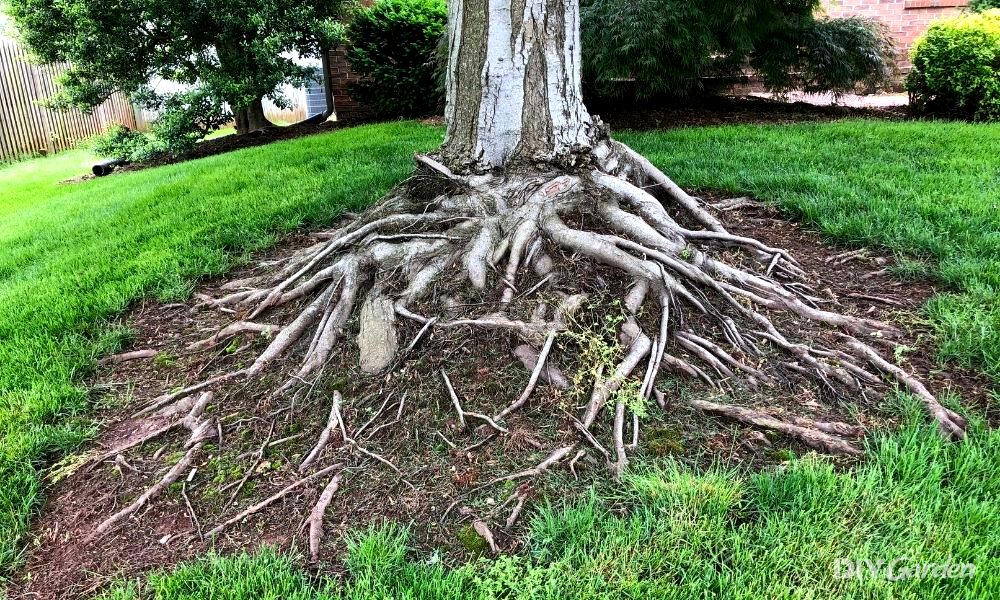
Most trees, whether you’re planting an exotic fruit tree or a native scrub tree, need good drainage. Without this, water ends up pooling around a tree’s roots. This suffocates them and causes them to rot away.
If you don’t have good drainage in your garden, there are a few options available to you when it comes to rectifying this, from heavily mulching your trees to replacing soil. Today, we’re going to be discussing a lesser-known option – planting trees on mounds. This simply means that rather than digging a hole into your ground to plant a tree in, you create a mound of soil above the ground and plant your tree into that instead.
Why Plant Trees on Mounds?
As mentioned, the main reason that people adopt this planting technique is to improve soil drainage. So long as you build your mound correctly (we’ll soon explain how to do this), then excess water will run away from the root ball, which means that your soil will be able to easily drain itself.
Not only does this prevent rot, but it also prevents the pests and diseases that can arise from overly wet soil. It also gives you the chance to grow trees that you may not have otherwise been able to grow in your garden due to soil type – when building your mound, you can use any type of soil that you like, therefore creating the perfect environment for your chosen trees.
Building Your Mound
Before building your mound, choose the perfect location for the tree you’re planting. Consider how much light your tree will receive, as well as soil type. While you can alter the soil type in your mound itself, don’t forget that a tree’s roots will soon extend out of the mound and into your native soil, so the two do need to be somewhat compatible.
Then, clear your planting area of any weeds and other debris. Start building your mound, aiming for the top of the mound to be around 10-12 inches tall. When it comes to diameter, this is up to you, but, ideally, you want your mound to slope gently down towards the ground. Try to avoid having any dips or crevices in your mound. These will cause water to settle into them, defeating the purpose of the mound.
Adding a Watering Ditch
Some trees require both plenty of water as well as good drainage, which can be difficult to balance. This is where a watering ditch comes in handy. Dig this around the outside of your mound, ensuring that it’s at least 3 feet away from the centre. Ideally, the ditch should be about 3-4 inches deep, so that it holds a good amount of water. This water will slowly be fed to your tree’s lateral roots as they grow, without causing your soil to become overly saturated.
Summary
Planting trees on mounds is a great way to overcome poor drainage conditions in your garden, enabling you to grow a much larger variety of trees. Whether you’ve been eyeing up a majestic feature tree or a small fruit tree, give mound planting a try the next time you’re adding a new tree to your garden.
